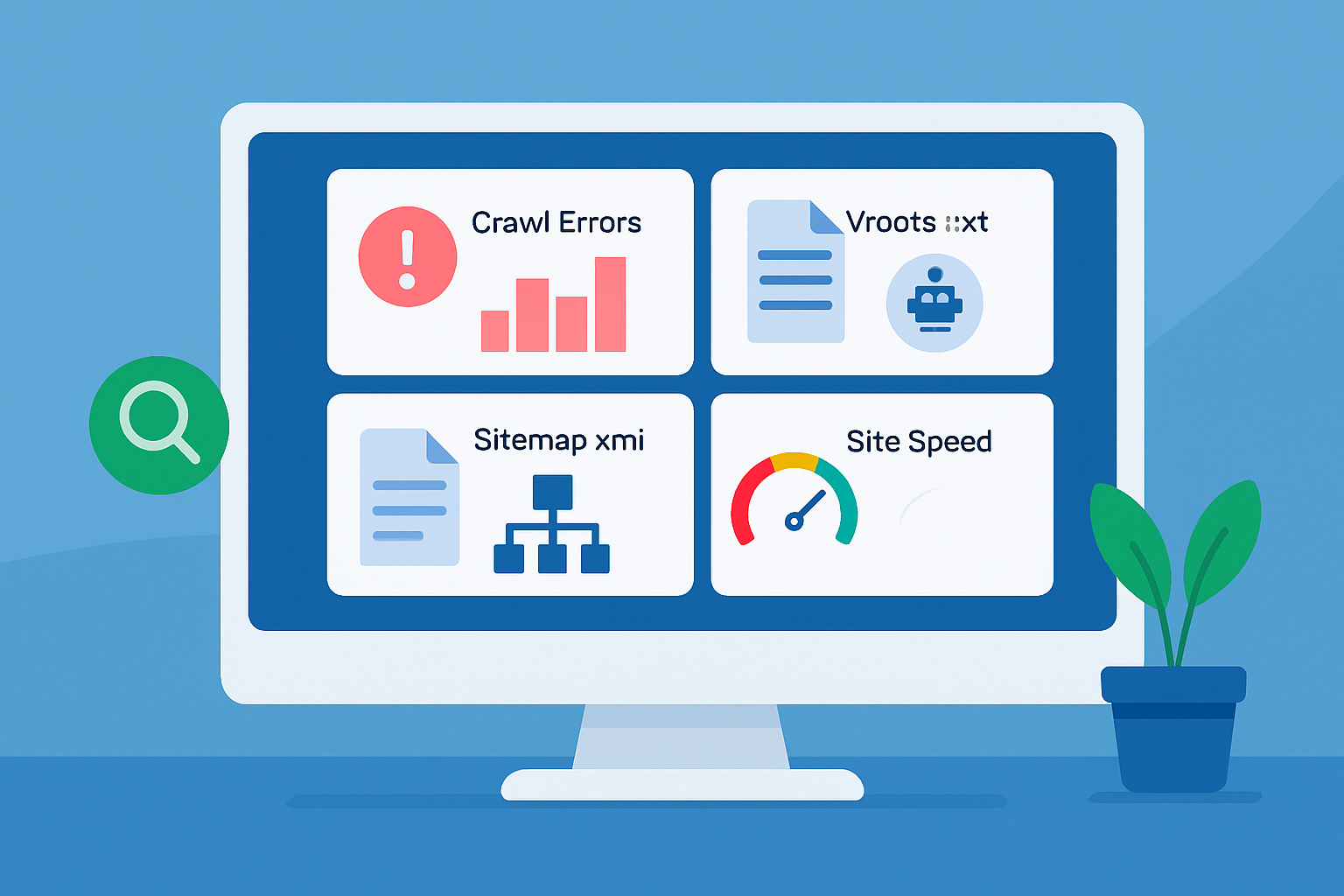How to Audit a Website Step by Step to Spot Key SEO Issues


Learning how to audit a website carefully is absolutely important when it comes to sniffing out those pesky SEO issues that might be holding back your search rankings and traffic. This guide walks you through the website audit process step by step, starting with the basics before diving into the nitty-gritty details.
Getting a Grip on How to Audit a Website: The Basics of SEO Audits
A website SEO audit takes a good hard look at your site's overall health and how it actually performs in search engines. It digs up technical hiccups, on-page quirks and off-page hurdles that might hold your site back from climbing the rankings. Regular audits shed light on ways to fine-tune your site’s structure, content, user experience and backlink profile. By catching issues like broken links, poor keyword targeting or slow load times, audits give you a clear idea of what to fix first to boost visibility and attract more organic traffic.
Step 1 Getting Ready and Rounding Up Your Tools
Gather the right tools and lock down access to key site data before diving into your website SEO audit. This little bit of prep work goes a long way in making your audit both smoother and more thorough, helping you catch everything important—from the nuts and bolts of technical basics to the overall quality of your content.
- Use Google Analytics to dive into traffic trends and really get a feel for how visitors navigate your site. It’s like having a backstage pass to your own website.
- Keep an eye on Google Search Console because it’s invaluable for checking your indexing status and catching errors before they snowball.
- Fire up Screaming Frog SEO Spider to crawl your site and sniff out technical hiccups lurking beneath the surface.
- Gauge your site’s speed and overall performance with Google PageSpeed Insights since nobody likes a slowpoke.
- Make the most of SEO tools like Moz, Ahrefs, SEMrush or Mangools for digging into keyword research and uncovering backlink opportunities as they’re your trusty SEO sidekicks.
- Test how mobile-friendly your site is using Google’s Mobile-Friendly Test because more people browse on their phones nowadays.
- Double-check your structured data with Google’s Structured Data Testing Tool to keep those rich snippets shining bright.
- Ensure you’ve got easy access to your website’s CMS and hosting control panel so you can roll up your sleeves and make updates when needed.
Step 2 Taking a Closer Look at Your Technical SEO
The technical SEO audit dives into the behind-the-scenes bits of your site that really determine how search engines crawl and index your pages. Think of it as making sure the engine under the hood is running smoothly. A clean and well-organized website structure is key to ensuring all your important pages get their fair share of attention and climb the ranks responsibly. You’ll definitely want to watch for sneaky issues like broken links, crawl errors, confusing redirects and of course how fast your pages load—because nobody likes to wait around.
Make sure search engines can actually crawl your site.
Peek at your robots.txt file to double-check it’s not blocking any vital pages and skim through your sitemap.xml to ensure all important URLs have made the cut.
Take a good look at your URL structures too. They should be clean, packed with relevant keywords and consistent throughout.
Keep an eye on server response codes to catch broken links, redirects or server errors. Once spotted, tackle them head-on.
Evaluate your site speed using tools like PageSpeed Insights or GTmetrix. Fast loading times on both desktop and mobile aren’t just nice to have. They’re essential for keeping visitors happy and climbing those search rankings.

Dashboard displaying key technical SEO audit elements such as crawl errors, sitemap status, and site speed scores.
Step 3 Time to Roll Up Your Sleeves with an On-Page SEO Audit
On-page SEO focuses on the small details of a page that determine its relevance to search engines and how users engage with it. We’re talking about checking how well meta titles, descriptions, header tags and overall content quality are fine-tuned. Using keywords thoughtfully and organizing headings clearly helps search engines understand the main topics and nudge rankings upwards. Plus, it’s vital to find duplicate content and fix broken internal links to keep the user experience smooth.
- Give those meta titles and descriptions a once-over to ensure they’re truly unique and just the right length—this tweak can do wonders for boosting your click-through rates.
- Take a close look at how header tags H1, H2 and friends are lined up to make sure they clearly map out the content’s hierarchy without leaving anyone scratching their heads.
- Keep an eye on keyword usage by aiming for a smart sprinkle in titles, headings and throughout the text—just enough to hit the mark without turning it into keyword stuffing city.
- Size up the content quality by checking for originality, relevance and neat formatting while making sure you’re steering clear of duplicate or limp thin content that nobody wants to read.
- Peek at the internal linking structure—good navigation helps users find their way and spreads page authority like a friendly neighborhood gossip.
Step 4 Reviewing Your Off-Page SEO (Because what goes on outside your site matters just as much)
Off-page SEO takes you beyond your own website by focusing on behind-the-scenes factors that move the needle in search rankings—like quality backlinks and meaningful brand mentions. Links from reliable and trustworthy sites act like digital nods of approval. They boost your authority and improve your organic visibility. Running an audit is more than a good idea. It is a health check on your backlink profile that helps root out shady or spammy links dragging you down.
- Use handy tools like Moz or Mangools’ LinkMiner to size up not just the number of backlinks but more importantly their quality. Pay special attention to strong and relevant referring domains that really pack a punch.
- Keep an eagle eye out for any shady or spammy backlinks that might get you in hot water with penalties. It’s wise to consider disavowing or removing those troublemakers.
- Give the anchor text a thorough once-over to ensure it flows naturally and doesn’t scream over-optimized.
- Scout for brand mentions and citations scattered across the web because they’re little nuggets that can seriously beef up your site’s authority and give your local SEO a nice boost.
Step 5 Taking a Closer Look at User Experience and Engagement
User experience (UX) is a big deal when it comes to ranking, covering everything from how smoothly people can find their way around your site to how well it performs on mobile devices and just how fast your pages load. Metrics like bounce rate and dwell time give you a peek behind the curtain, showing how relevant your content really is and whether visitors are sticking around with a smile or bouncing off in frustration.
- Keep an eye on your site speed and loading performance on both desktop and mobile devices using tools like PageSpeed Insights or GTmetrix because nobody likes waiting for a slow website.
- Double check that your site looks sharp and runs smoothly on every screen size. This is vital nowadays with mobile-first indexing taking center stage.
- Review your site navigation and make sure menus, links and calls to action are clear and easy to use. Frustration is the last thing you want for your visitors.
- Dive into user engagement metrics like bounce rate and average session duration in Google Analytics to get a real feel for what’s working and where you might want to tweak things.
Step 6 Reviewing Structured Data and Schema Markup Taking One Last Careful Look
Structured data and schema markup basically hand search engines a little extra context about your content, which can open the door to fancier search results like enhanced snippets that really catch the eye. Giving your schema a test run on your site isn’t just a good idea—it’s often the secret sauce that boosts both visibility and those all-important click-through rates.
- Your website is sporting schema markup on essentials like articles, products, reviews or local business info that really matter.
- Google's Structured Data Testing Tool helps spot any pesky errors or warnings that deserve your attention.
- Your pages are eligible for eye-catching rich snippets and enhanced search results that can give your user engagement and click-through rates a nice boost.
Step 7 Spotting and Prioritizing Those Pesky SEO Issues
When learning how to audit a website, the final step is to craft a clear and detailed report that lays out all the SEO issues you uncovered. It's a good idea to rank them based on how much impact they could have and how tricky they might be to fix—this way, you can zero in on the most important fixes first. Include recommended actions and realistic timelines to keep your SEO improvement plan both focused and effective.
- Wrap up all the technical, on-page, off-page and user experience and schema-related hiccups uncovered during the audit so nothing slips through the cracks.
- Sort each issue by how serious it is: critical, medium and minor. This way you can zero in on what truly deserves your attention first.
- Lay out straightforward practical recommendations for every snag along with a heads-up on the kind of results you might expect. No crystal balls, just solid guidance.
- Suggest realistic timelines for knocking out each problem while keeping in mind the resources available and what’s top of the priority list.
"Zeroing in on SEO tweaks that hit the sweet spot between impact and effort usually brings about the best bumps in search visibility and ROI, giving your website a much better shot at standing out in today’s crowded digital landscape. It is the kind of strategy that feels both smart and doable, if you ask me."
Further Reading
Unleash Your SEO Prowess with Semrush
Are you struggling to boost your online visibility and drive more traffic to your website? Semrush is the ultimate SEO and digital marketing tool that can take your Internet Marketing game to new heights. With its powerful suite of features, you can gain a comprehensive understanding of your market, optimize your content, and outrank your competitors.
- Uncover Profitable Keywords with Advanced Research
- Analyze Your Site's Health with Detailed Audits
- Monitor Backlinks and Stay Ahead of Competitors
- Streamline Content Creation with Insights and Trends








